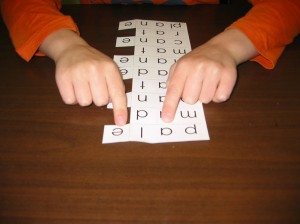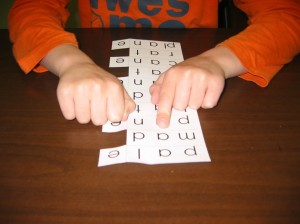I have a student who is very much a kinesthetic learner. We are just starting to tackle silent-e, and while he knows and can articulate what the silent-e means, putting it into practice when reading words on the page is a whole other challenge.
While working with him on a-silent-e vs. short a, I found myself pointing to the a with one hand, and either pointing to the silent-e with the other hand or closing that hand into a fist when there was no silent-e. I asked him to follow along and do the same thing, so that he was mirroring me, and actively engaging in determining whether there was a silent-e in the word he was reading.
When he was pointing with both hands, he knew he needed to say the long-a sound. When he closed his fist when there was no silent-e to point to, he knew he was supposed to say the short-a sound. Before long, he was doing it on his own without me, and doing a much better job of reading the words with the correct long vs. short vowel sound.
Interested in learning more about the practice sheets shown here? See Silent-e Fold Flap Sheets


